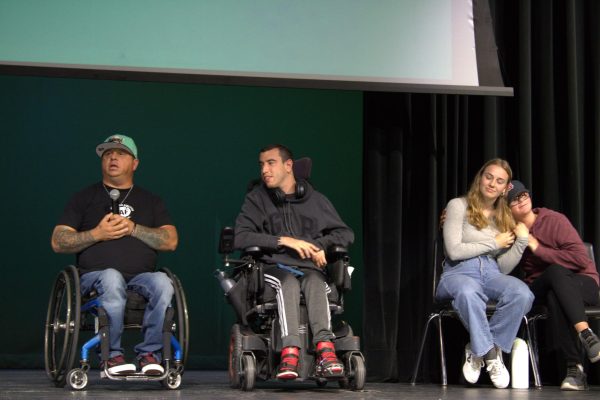Gerrymandering undermines democracy
November 2, 2022
Last October, San Diego Redistricting Commissioner Mitz Lee resigned. Her resignation was prompted by claims of unethical conduct. While community members advocated for the incorporation of UCSD and its neighboring communities into District 6, Lee instead pushed the Asian Pacific American Coalition, an organization she co-founded, to support a map of District 6 advantageous to the Asian and Pacific Islander community.
According to the news organization Voice of San Diego, she was subsequently accused of “improperly influencing the redistricting process.”
The accusations pertained to gerrymandering, or the manipulation of boundaries to favor a certain political interest. Hypothetically, if a region had three districts and was 60% Democrat and 40% Republican, gerrymandering could result in two Republican districts and one Democrat district. The effects are calamitous. Politicians end up essentially choosing their voter bases, ignoring voter preference. For all practical purposes, gerrymandering can nullify an election.
In Pennsylvania for example, the congressional map gave Republicans 13 out of the state’s 18 congressional districts, even though Democrats won the majority of the statewide congressional vote. In Wisconsin, Democrats won every statewide office and a majority of the statewide vote during the 2018 election, but due to district lines, won only 36 out of the 99 seats in the state assembly.
Redistricting, or redrawing voting boundaries, occurs every 10 years when the nationwide census occurs. In theory, districts must proportionately represent the electorate and comply with statewide standards of being a relatively equal population to each other and minimizing communities of interests. But the redistricting process is often abused.
This October in Los Angeles, President Biden called for the resignation of city council members Nury Martinez, Gil Cedilo, and Kevin de Leon. The Los Angeles Times and The New York Times obtained private recordings where the council members engaged in a demeaning, racist, and slur-filled conversation. To name a few, Martinez compared the Black child of a white council member to a little monkey, and called Oaxacan immigrants “little short dark people.” The council members then continued to discuss how to manipulate districts that were historically represented by Black council members to favor Latino representation. They spoke about strategies to redistrict in a way that would ensure Latino leaders have assets such as airports that are able to provide them with fund-raising abilities.
In San Diego, the city council is not tasked with redistricting. Instead, the San Diego Independent Redistricting Commission has exclusive authority to design and approve district maps. This year, those maps were finalized, Jan. 15. Though the independent commission has eliminated some bias, not everyone is satisfied.
In March, a non-profit advocacy group sued the County on the grounds that the redistricting plan unlawfully diminished the voting power of Chaldeans, a religious and ethnic minority group, by splitting parts of the El Cajon region away from the rest of East County. The Chaldean community, consisting of approximately 50,000 people, has historically voted for conservatives. The new district lines puts 20% of the former District 2 into District 4, which leans towards liberals.
Officials have responded stating that the commission was legally required to factor in population and the presence of minority groups among other considerations, but it was prohibited from considering political parties or politicians. Regardless, representatives from the Chaldean community said that their community was fragmented for political reasons.
The San Diego Superior Court ultimately denied their request to delay the approval of the district maps.
Our district, consisting of Black Mountain, Rancho Peñasquitos, Scripps Ranch, Torrey Highlands, Sabre Springs, and San Pasqual has remained as District 5. For the California State Senate, our district was formerly the 39th. It is now the 40th. For the congressional district, we were formerly the 52nd district represented by Scott Peters. Now, we are the 50th. Finally, for the state assembly district, we were formerly the 77th. Now, we are the 76th.
The California redistricting process is done by the Citizens Redistricting Commission. They’re responsible for the Congressional, State Senate, State Assembly, and State Board of Equalization districts while the county maps are drawn at the local level.
The state’s independent commission was first authorized in 2008, and consists of 14 members. It’s made up of five Republicans, five Democrats, and four unaffiliated with either party. They were selected by three independent auditors. This year, they started the maps with a blank slate.
On Feb. 10, the redistricting of California ended. Throughout the process, the commission faced heavy criticism. Republican voters had filed a petition stating that an analysis of “racially polarized voting wasn’t made public.” According to the Times of San Diego, the Republican group also challenged the commission’s selection of its legal counsel, as the firm had previously worked for Democrats.
There were also concerns about the increase in funding. This year, the commission received $20.3 million in funding from the state, which is nearly twice as much as the previous one received.
Surprisingly, even after such intense criticism, the maps were unanimously approved and finalized with no subsequent legal challenges.
Experts have credited this to the commission’s transparency and accessibility. No system is perfect, but both California and San Diego County strived to implement a completely independent process to avoid political gerrymandering like what recently occurred in Los Angeles.
Progress can always be made, but each step towards non-partisan, fair redistricting will ensure the preservation of our democracy.







